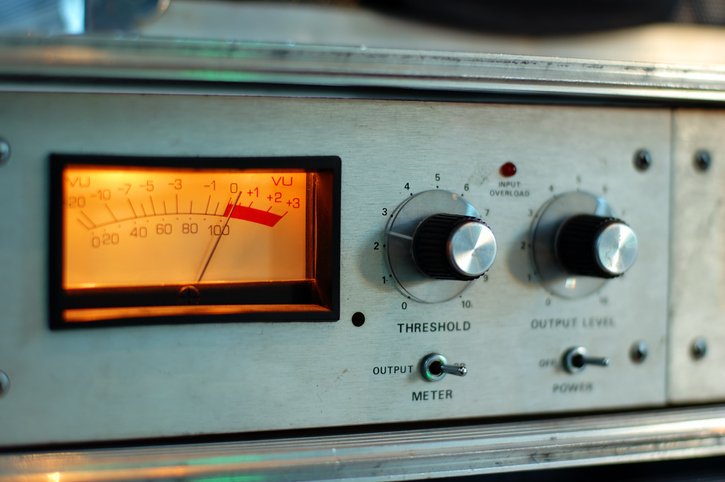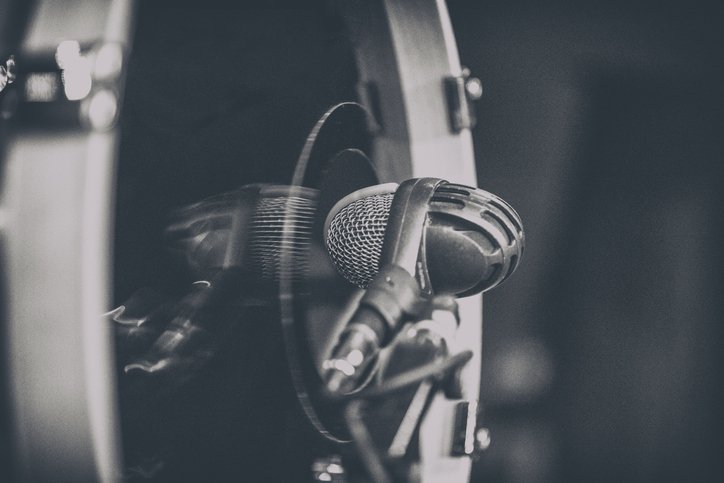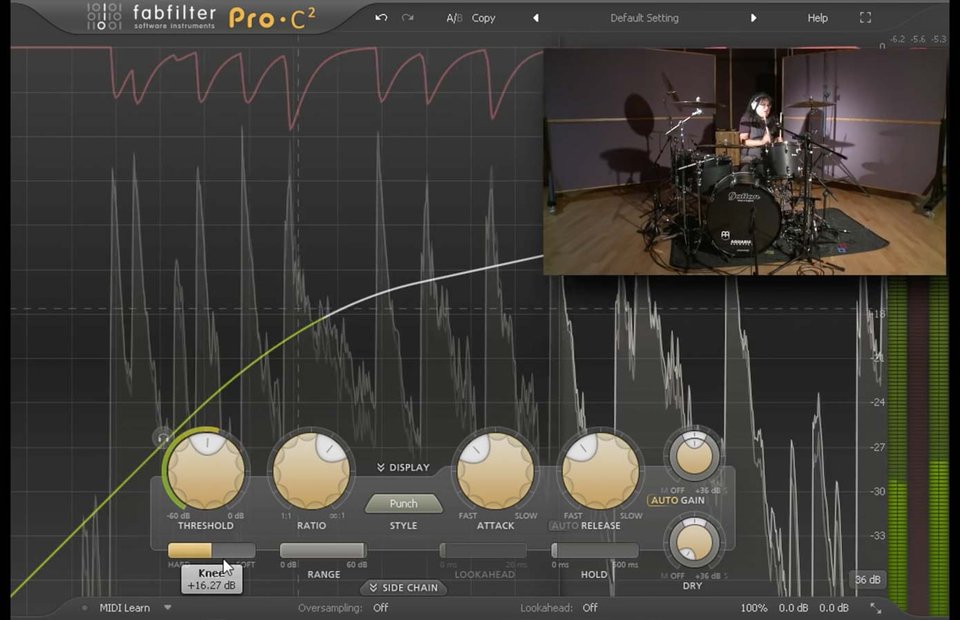In certain circumstances you may find that some compressor settings produce unwanted side effects. For example, this can happen when you set a fast enough attack and release that the compressor begins to react to individual waveform cycles rather than the overall signal. The gain reduction then effectively changes the waveform shape, producing distortion. Bass sounds, with their slow moving waveforms are particularly prone to this, but delicate acoustic instruments can also present difficulties because they'll ruthlessly expose the smallest of distortion artefacts.
Another common problem you might run into is with percussive bass sounds such as kick drums and plucky bass guitars as compressing them with attack times under 50 milliseconds easily lead attenuating too much low end. The reason for this is that the compressor begins clamping down during the first couple of waveform excursions which affects lower frequencies more than higher ones. If you're aware of the issue it's not that tricky to avoid, but it's easy to miss if your focus is on something else. There’s a great solution for solving this type of issue: using a compressor's side chain input.

All dynamics processors consist of a detector circuit and amplification section. The detector circuit analyzes the signal and tells the amplifier how to react to the incoming signal. Many compressors allow you to alter or control the input signal at the detector circuit separately from the signal which passes through the amplification section. This is often referred to as side chaining, side chain filtering or side chain EQ.
As previously explored, a compressor is often used to control the louder sections of a sound and control the dynamic range. The better the detector circuit is set to trigger the amplification section during the problematic portions of a sound, the better the compressor will be at addressing a specific problem. A side chain EQ essentially allows us to tell the compressor to pay more or less attention to certain parts of the incoming signal's frequency spectrum. We accomplish this by exaggerating the areas that are problematic and filter the frequencies we don't won't the detector to respond to. Note, these frequencies aren't filtered out of the audio passing through the amplification circuit, just the detector circuit.
The most common application of side chain filtering is using a high pass filter in the detection path to control low frequencies at the input stage of the compressor. Let’s say you want to control the transient of the kick drum. If you adjust the threshold accordingly to a point where the compressor is triggered, chances are that the compressor triggers on the low end portion of the sound rather than the (higher) transient part of the kick drum. The reason for this is the fact that the sound contains more energy in this region. By using a side chain filter you can get rid of the low end in the detector circuit, causing the compressor to trigger on the transient you want to address instead. Keep in mind that while the low end has been filtered in the detector circuit, it has not been filtered in the signal we hear. The kick drum still has all of its low end, but we can now focus the compressor's response on its attack.
FabFilter Pro-C 2 comes with a three-band side chain EQ; a high and low cut filter plus a bell filter. Using these filters in conjunction you can filter or highlight certain aspects of a sound in the detector circuit, allowing the compressor to only trigger on very specific frequencies.

Side chain filtering allows you to control the compressor's detection path which determines what signal the compressor will be triggered on. Beyond fine tuning which frequencies you want to pass through the detection circuit, routing external signals to the detection path opens a world of creative possibilities.
Apart from addressing problems, side chaining can also be used for creative effects. Side chain compression is a cornerstone of a wide variety of genres, specifically dance music. In the previous examples, the detector circuit was manipulated using EQ but side chain compression can also refer to the practice of feeding any other signal entirely to the detector circuit. A common method is sending a kick signal to the detector circuit of a compressor that is inserted on the instrument providing the bass. This way, you’re controlling the volume of the bass with the signal of the kick. This technique is commonly used on bass lines, automatically ducking the bass on the parts where the kick hits, causing it to let the kick drum through without muddying the low end. Of course, the trick here is to set the attack and release controls so that the volume changes in the bass line is virtually undetectable. This is a great trick to keep your track clear and punchy.
Another variation on this technique is to use a side chain signal that isn't even a part of the mix. This is a common technique with synth pads; creating the aforementioned ducking effect without actually hearing the signal that's triggering the compressor. Using this technique allows you to create very specific volume envelope changes, such as the fade-in effect used commonly in dance music. The possibilities of this technique are virtually endless.

